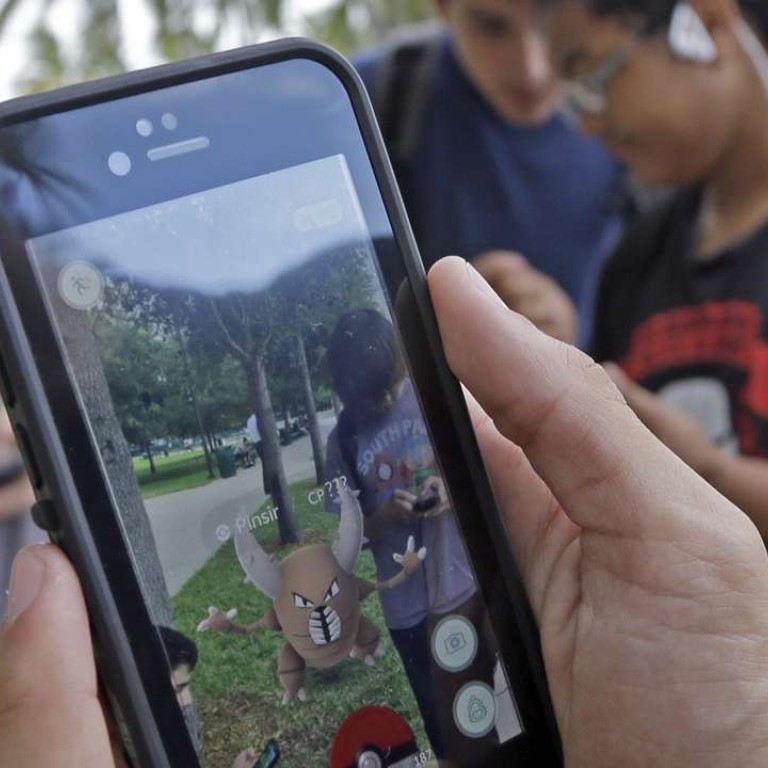
Pokemon Go captures investors’ imaginations, but venture capitalists remain reluctant to play along
Blockbuster game becomes fantastic shop window for the augmented reality sector
The recent runaway success of Pokemon Go, a game which lets users track down and catch virtual Pokemons in their vicinity, has given Chinese investors a real taste of the possible rewards from speculating in the world of augmented reality (AR).
AR products offer users real time display of real-world images, with computer-generated information and media.
Several Chinese AR-related shares have continued to rise by their daily 10 per cent limits in recent days, along with the increasing popularity of Pokemon Go in overseas markets, even though the first mass-adopted AR game is yet to be launched in China.
Hengxin Mobile Business and Ningbo GQY Video & Telecom JSC have surged about 40 per cent in the latest fortnight, while Alpha Group, and Meisheng Cultural & Creative have rallied 15 per cent in the same period. All four are listed in Shenzhen.
Lenovo Group was also heavily traded and led gains in Hong Kong shares on Wednesday, after mainland media reported it is developing a mobile game using AR technology.
Pan Ninghe, a research analyst at Chuan Cai Securities, said it’s “reasonable and understandable” that the popularity of Pokemon Go has pricked the interests of Chinese retail investors, because AR-related shares have been gaining among investors globally.

The imminent launch of the mobile-gaming sensation in its home country of Japan is being hotly anticipated.
Pan from Chuan Cai Securities, said however, the game is yet to spark any significant interest from China’s venture capital community, because it doesn’t actually showcase any revolutionary breakthrough in AR technology.
“VCs are much more rational in their investments than individuals,” he added.
“I don’t think VC investment scales into the AR market will change a lot, just because of a popular game.
“We will have to wait another two or three years, at least, to see the real benefits coming from AR technology,” Pan added.
A technology researcher from Shenzhen, who asked not to be named, said he’s keeping an eye on China’s AR market, but also doesn’t think the time is right yet to invest in it as there are few startups showing any significant promise in the technology
Pan, however, does think AR-related stocks are likely to continue rising if the blockbuster game becomes available in Asia.
“The success of Pokemon Go cannot avoid enhancing investor confidence in AR technology,”he said.
US investment bank Goldman Sachs recently upgraded its outlook for the sector in an equity report, and now forecasts globally it will be worth US$36 billion by 2025, up from its previous US$10 billion.
“In our prior model, we only included AR shipments for enterprise use in engineering, healthcare, and education.
We believe consumers have the potential to begin using AR devices as a supplement or even replacement to smartphones, for day-to-day tasks
“We have now expanded that to include consumer use and broader enterprise adoption, and we believe consumers have the potential to begin using AR devices as a supplement or even replacement to smartphones, for day-to-day tasks,” Wei Chen, an analyst at Goldman Sachs said in the report.
“AR devices can be used in a similar way to how PCs and smartphones are used now.”
New technology product prices do inevitably start to fall at some point in the future.
And for that reason, Goldman now estimates the virtual reality market — which involves using computer-generated virtual environments presented to users in ways that resemble reality — will be worth US$59 billion in 2025, down from its previous US$69 billion estimate.
Its figures for this year, however, suggest both sectors are still very much on an upward trajectory.
Quarterly VC funding for startups in the industry have been above US$150 million in each of the past three quarters, it said.
But the first three months of this year saw a 27 per cent rise from last quarter to an all-time high of US$279 million, excluding the US$800 million round for Magic Leap, a US-based AR company, which gained massive fund supports from global technology giants.

